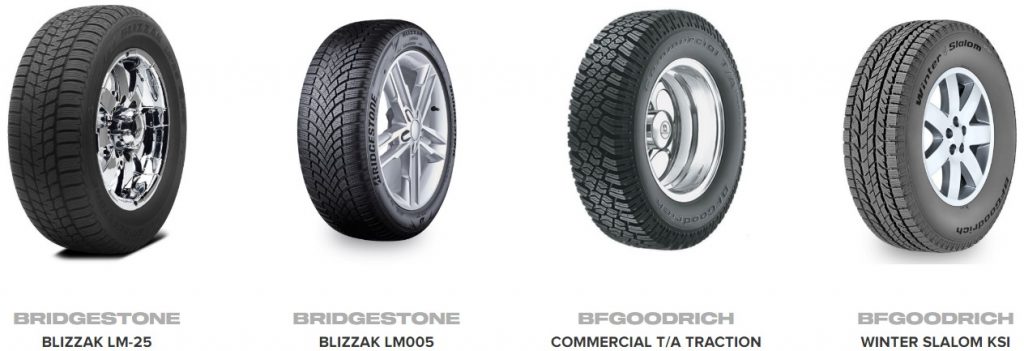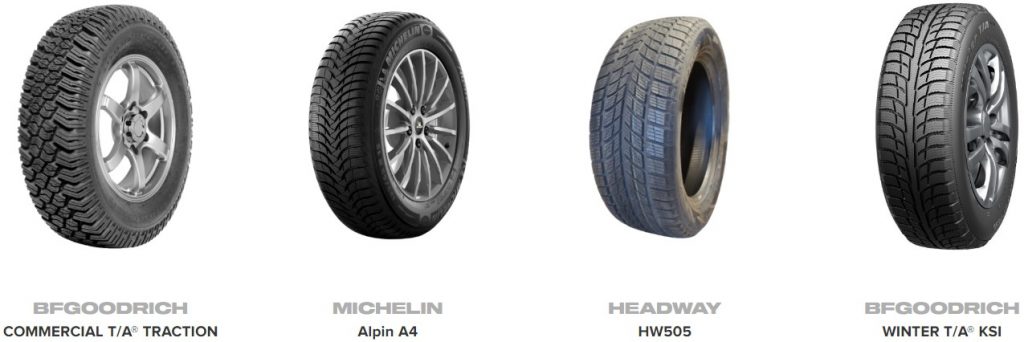Winter is fast approaching, and it's time to start thinking about equipping your vehicle with the right tires to ensure safety and optimal performance on icy and snowy roads. But with so many options available, how do you choose the best winter tires without breaking the bank? In this article, we’ll explore the different types of winter tires, their costs, offer five money-saving tips, and provide a comparison chart to help you make an informed decision.
Understanding winter tires: Types and differences
Winter tires are specifically designed to perform in cold weather conditions, particularly on snow and ice. The two primary types of winter tires are Studded and Studless.
- Studded winter tires:
- Features: These tires have metal studs embedded in the tread. The studs dig into ice, providing excellent traction.
- Best for: Extremely icy conditions or areas where black ice is common.
- Drawbacks: Studded tires can be noisy on dry pavement and may cause additional wear on roads. They are also regulated or banned in some areas, so it’s essential to check local laws before purchasing.
- Studless winter tires:
- Features: These tires use advanced rubber compounds and tread designs to provide grip on snow and ice without the need for metal studs. They remain flexible in freezing temperatures, enhancing traction.
- Best for: A variety of winter conditions, including snow, slush, and cold dry roads.
- Drawbacks: While excellent in most winter conditions, they may not perform as well as studded tires on sheer ice.
Cost considerations for winter tires
The cost of winter tires can vary significantly depending on the brand, type, and size. On average, a set of winter tires can range from $500 to $1,200, excluding installation and other fees. Here’s a breakdown of what affects the price:
- Brand: Premium brands like Michelin and Bridgestone tend to be more expensive, but they often offer superior performance and longevity.
- Tire size: Larger tires for SUVs and trucks typically cost more than smaller ones for sedans.
- Type: Studded tires are generally more expensive than studless due to the additional manufacturing processes involved.
Winter tire comparison chart
| Feature | Studded Winter Tires | Studless Winter Tires |
| Traction on Ice | Excellent due to metal studs | Good, but not as effective as studded |
| Traction on Snow | Very Good | Excellent |
| Noise Level | High, especially on dry pavement | Quiet, comparable to all-season tires |
| Road Wear | Can cause additional road wear | Minimal impact on road surfaces |
| Legality | Restricted or banned in some areas | Legal everywhere |
| Cost | Typically higher due to added studs | Generally lower than studded tires |
| Ideal Conditions | Extreme ice and black ice | Varied winter conditions (snow, slush) |
5 Money-Saving tips on winter tires
- Shop early: Prices tend to spike as winter approaches, so buying your tires early in the fall can save you money. Some retailers offer early bird discounts or rebates during this time.
- Consider used or retreaded tires: If you’re on a tight budget, used or retreaded winter tires can be a cost-effective option. Ensure they’re in good condition and have enough tread depth to be effective in winter conditions.
- Look for promotions and rebates: Many tire manufacturers offer rebates or promotions during the fall and winter seasons. Check manufacturer websites or visit your local tire retailer to find the best deals.
- Buy online: Online retailers often have lower prices than brick-and-mortar stores. Be sure to compare prices across multiple websites and check for free shipping offers.
- Invest in a quality set: While it may be tempting to go for the cheapest option, investing in a high-quality set of winter tires can save you money in the long run. Better tires will last longer and provide better performance, reducing the risk of accidents and the need for premature replacements.
Conclusion: ready to upgrade your winter tires?
Winter tires are an essential investment for safe driving during the colder months. Whether you choose studded or studless, understanding the differences and costs will help you make the best decision for your needs and budget. Don’t wait until the first snowfall to start shopping—take advantage of early deals and promotions to save money.
If you’re ready to purchase high-quality winter tires, visit Canada Custom Autoworks. They offer a wide selection of tires to suit every vehicle and budget, ensuring you stay safe on the road this winter.
Frequently asked questions
Can I use winter tires all year round?
Winter tires are specifically designed for cold weather and icy or snowy conditions. Using them in warmer months can lead to faster wear due to their softer rubber compound, which is not optimized for heat. For best performance and longevity, it’s recommended to switch to all-season or summer tires once the temperature consistently stays above 7°C (45°F).
Do I need to replace all four tires with winter tires?
Yes, it’s important to replace all four tires with winter tires for balanced handling and safety. Mixing different types of tires can lead to uneven traction and unpredictable handling, especially on slippery surfaces.
How can I tell if my winter tires need to be replaced?
Winter tires typically have a tread wear indicator—a small raised bar within the grooves of the tire. If the tread is worn down to this level, it’s time to replace the tires. Additionally, if the tread depth is below 4/32 inches, the tires may not provide adequate traction in snow and ice.
Are studded tires worth the extra cost?
Studded tires are worth the extra cost if you frequently drive on icy roads or in areas prone to black ice. However, for most drivers, studless winter tires offer sufficient traction in a wide range of winter conditions and are more versatile.
Where can I find high-quality winter tires at a good price?
For a wide selection of high-quality winter tires at competitive prices, visit Canada Custom Autoworks. They offer expert advice and a range of options to fit your vehicle and budget, ensuring you’re well-equipped for the winter season.


